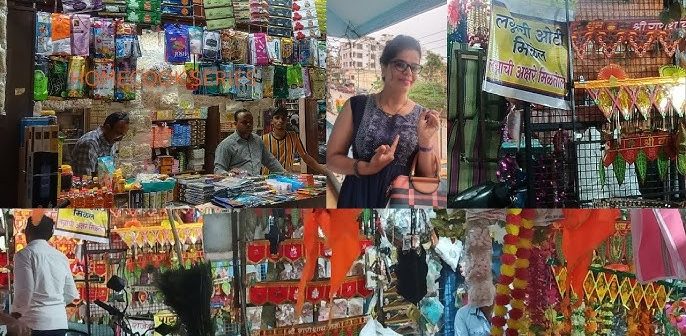Nestled in the bustling heart of Belagavi, Karnataka, Khade Bazaar stands as a testament to the city’s rich history and vibrant commercial life. This sprawling market area, known for its eclectic mix of goods and lively atmosphere, has long been a hub for shoppers, vendors, and visitors alike. From its historical origins to its contemporary significance, Khade Bazaar offers a unique glimpse into Belagavi’s cultural and economic fabric. This article delves into the history, types of shopping, and the quintessential experience of bargaining at Khade Bazaar.
Historical Origins of Khade Bazaar
Khade Bazaar, also known as the “Old Market,” has deep historical roots that reflect the evolution of Belagavi as a major trading center. The market’s origins can be traced back to the 19th century when it was established as a central commercial hub during the British colonial period. Its strategic location, situated along major trade routes, facilitated the growth of a bustling market that catered to the diverse needs of the local population.
The architecture and layout of Khade Bazaar also reflect its historical significance. Many of the market’s buildings feature traditional design elements, such as old-fashioned facades and narrow alleyways, which echo the architectural styles of the colonial era. This historical ambiance adds to the market’s charm, drawing visitors who are eager to experience a slice of Belagavi’s past.
Types of Shopping at Khade Bazaar
Khade Bazaar is renowned for its wide array of products, ranging from traditional goods to modern necessities. Here’s a closer look at the various shopping experiences one can find in this vibrant market:
- Traditional and Handicraft Items: One of the main attractions of Khade Bazaar is its collection of traditional and handcrafted items. The market is home to numerous stalls selling artisanal crafts, including intricate Karnataka-style jewelry, hand-woven textiles, and beautifully crafted pottery. These items reflect the rich cultural heritage of the region and are popular among both locals and tourists.
- Spices and Condiments: A visit to Khade Bazaar is incomplete without exploring its spice section. The market offers a plethora of aromatic spices, herbs, and condiments. From fragrant cardamom and cloves to spicy chili powders and unique masala blends, the spice stalls provide a sensory overload that is both exciting and educational for those interested in culinary arts.
- Fresh Produce and Groceries: The market is also known for its fresh produce, including fruits, vegetables, and local staples. The bustling produce section features vibrant displays of seasonal fruits and vegetables, along with fresh herbs and roots. Additionally, grocery stores within Khade Bazaar stock a range of staples, including rice, lentils, and local snacks.
- Clothing and Accessories: Fashion enthusiasts will find a variety of clothing options at Khade Bazaar. The market offers traditional attire such as sarees, kurtas, and dhotis, as well as contemporary clothing and accessories. The vibrant fabrics and designs cater to diverse tastes and occasions, making it a go-to destination for both everyday wear and special events.
- Jewelry and Artifacts: Khade Bazaar is famous for its jewelry stalls, which offer a wide range of options from traditional gold and silver pieces to contemporary designs. The market also features stalls selling antique artifacts and collectible items, appealing to those with a keen interest in history and heritage.
The Art of Bargaining
Bargaining is an integral part of the shopping experience at Khade Bazaar. Unlike fixed-price stores, many vendors in the market expect customers to negotiate prices. This aspect of shopping adds an interactive and dynamic element to the experience, making it a cultural ritual in itself. Here are some tips for effective bargaining at Khade Bazaar:
- Know the Market Rates: Before diving into negotiations, it helps to have a general idea of the market rates for the items you’re interested in. This knowledge gives you a better starting point for negotiations and helps you gauge whether a price offered is fair.
- Engage in Friendly Conversation: Building rapport with the vendor can go a long way in securing a better deal. Engage in friendly conversation, show genuine interest in the products, and be respectful. This approach can often lead to more favorable pricing.
- Be Prepared to Walk Away: If the vendor is unwilling to meet your price, don’t be afraid to walk away. Many times, vendors may call you back with a better offer once they see you’re serious about making a purchase.
- Buy in Bulk: Purchasing multiple items or buying in bulk can provide leverage for negotiating discounts. Vendors are often more willing to offer better rates for larger quantities.
Modern Developments and Challenges
While Khade Bazaar continues to be a vibrant and essential part of Belagavi’s commercial landscape, it faces certain challenges related to modernization and urbanization. The rapid growth of the city and the rise of shopping malls and online retail have introduced new competition, affecting traditional markets like Khade Bazaar.
Efforts are being made to preserve the market’s historical character while integrating modern conveniences. Local authorities and community organizations are working on improving infrastructure, enhancing sanitation, and maintaining the market’s cultural heritage.
Conclusion
Khade Bazaar remains a lively and indispensable part of Belagavi’s market culture. Its rich history, diverse shopping options, and the engaging experience of bargaining contribute to its unique charm. As Belagavi continues to evolve, Khade Bazaar stands as a testament to the city’s commercial heritage and its enduring appeal. Whether you’re a local resident or a visitor, exploring Khade Bazaar offers an authentic taste of Belagavi’s vibrant marketplace and its rich cultural tapestry.





